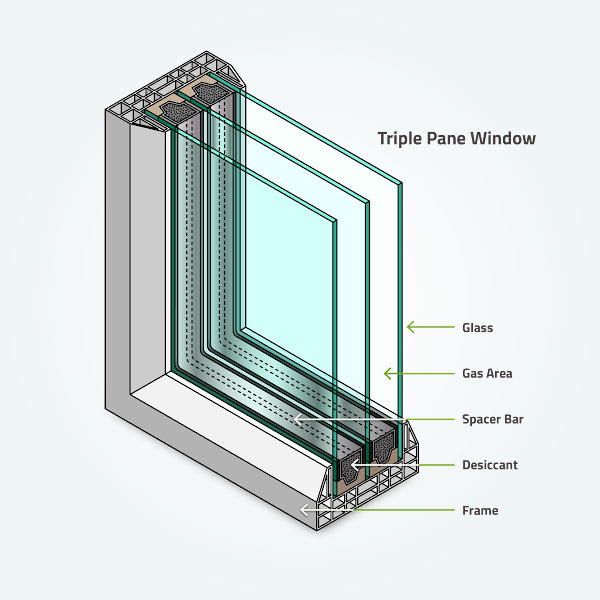Insulated glass, or double-glazed windows, is a type of glass designed to enhance energy efficiency and provide better insulation compared to single-pane windows. It consists of two or more glass panes separated by a spacer and sealed around the edges. The space between the glass panes is often filled with air or a gas, such as argon or krypton, to further improve insulation.
Key features and benefits
- Energy Efficiency: The primary purpose of insulated glass is to reduce heat transfer through windows, helping to maintain a more consistent indoor temperature. This can result in energy savings by reducing the need for heating or cooling, depending on the climate.
- Thermal Insulation: The air or gas trapped between the glass panes acts as an insulating layer, slowing down the transfer of heat between the interior and exterior of a building. This improves the thermal performance of the windows, making them more effective in regulating indoor temperatures.
- Condensation Reduction: Insulated glass helps minimize condensation on the interior surface of windows, especially in cold climates. This is because the temperature difference between the indoor and outdoor panes is reduced, resulting in less moisture condensing on the glass.
- Sound Insulation: The space between the glass panes can also contribute to sound insulation, reducing the transmission of external noise into the building. This is beneficial in urban areas or places with high noise levels.
- Enhanced Comfort: Insulated glass helps create a more comfortable indoor environment by reducing drafts and cold spots near windows during the winter months and minimizing heat gain in the summer.
- UV Protection: Some types of insulated glass may incorporate coatings that help block harmful ultraviolet (UV) rays. This is important for protecting furniture, flooring, and other interior elements from fading due to prolonged exposure to sunlight.
Common configurations of insulated glass include double-pane and triple-pane options, with the number of glass layers providing varying degrees of insulation. The choice of gas filling and coatings can also impact the overall performance of the insulated glass.
Insulated architectural glass is widely used in residential, commercial, and industrial buildings to improve energy efficiency, comfort, and overall environmental performance. It is a standard feature in modern construction and renovation projects aimed at meeting energy efficiency standards and sustainability goals.

Ready to Build with Glass? Start Your Project Today.
Discover professional processing and toughened glass solutions tailored for your needs.
Get a Free Quote Today!
